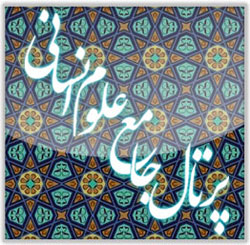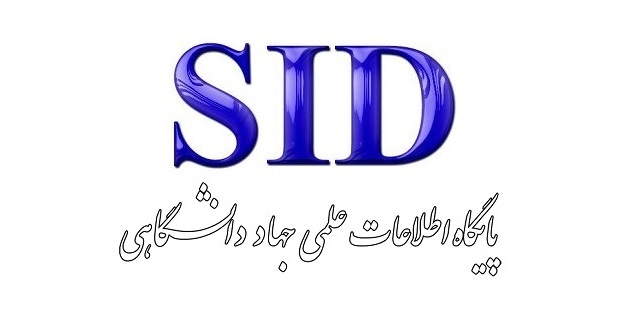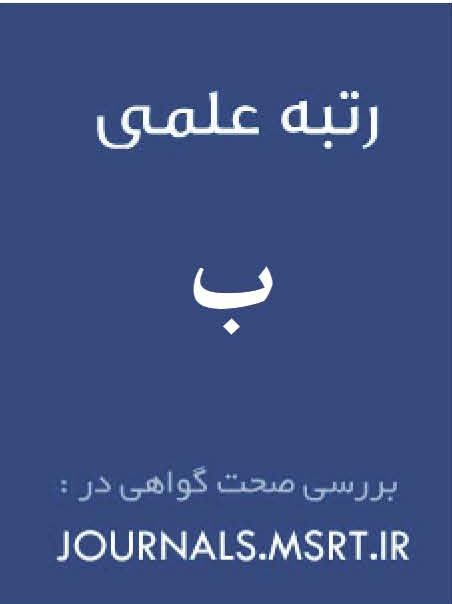Educational Implications Derived from the Analysis of the Concept of Aesthetics in Moral Education within Religious Teachings
Keywords:
Religious teachings, moral education, aesthetics of morality, aesthetics of the Quran, educational implicationsAbstract
The purpose of this study was to explain the educational implications derived from analyzing the concept of aesthetics in moral education within religious teachings. The research approach and data were both qualitative and quantitative. Logical analysis was employed to identify the educational implications, and the Lawshe content validity ratio method was used for validation. Data collection methods were library-based for the theoretical part and field-based for the validation part, in which 12 experts in the field of education were purposefully sampled. For data analysis, the thematic analysis method was applied. Findings indicated that, based on the educational outcomes of the aesthetic perspective on the concept of moral education, ten educational implications can be identified: (1) the use of artistic and metaphorical language and discourse in teaching moral concepts; (2) the application of aesthetic-based teaching methods; (3) the design of attractive educational spaces for the internalization of moral concepts; (4) the use of the potential of beautiful and inspiring environments in education; (5) the promotion of beauty through moral role models; (6) establishing a connection between moral virtues and aesthetic values; (7) the use of art as an educational tool to strengthen practical morality; (8) aligning aesthetics with a moral lifestyle; (9) integrating aesthetics with spirituality and religious morality; and (10) applying harmony and order in education. The results also showed that aesthetic-based educational implications in moral education enjoy a high degree of validity from the perspective of experts. The outcomes emphasized strengthening religious moral education through aesthetics, including the design of inspiring environments, the use of art and creative teaching methods, the promotion of moral language and role models, and the integration of beauty, spirituality, and a moral lifestyle.
Downloads
References
Adamzadeh, E. (2018). Analysis of the Nature of Beauty from the Perspective of Allameh Tabatabai and Its Educational Implications, and the Explanation of a Conceptual Model of Aesthetics for the Educational System Payame Noor University].
Adamzadeh, E., Sarmadi, M. R., Farajollahi, M., & Esmaeili, Z. (2016). From Allameh Tabatabai's Epistemology to Multifaceted Thinking in Aesthetic Education with a Look at the Holy Quran. Educational Teachings in Quran and Hadith, 2(3), 113-130.
Akrami, S. K., Delavar, A., & Tamsoki, M. R. (2021). The Current State of Religious and Moral Education of Students Based on the Indicators of the Transformation Document. Educational Sciences from an Islamic Perspective, 9(16), 126-150.
Al-Mutairi, M. A. (2024). The Beauty of Storytelling in the Holy Quran: Exploring and Analysing the Quranic Storytelling. American Journal of Educational Research, 12(4), 123-127. https://doi.org/10.12691/education-12-4-1
Al Rujaibi, I. (2022). Aesthetic Characteristics in the Qurʾān. Ilahiyat Studies, 13(1), 119-151. https://doi.org/10.12730/13091719.2022.131.235
Alipour Moghaddam, K., & Maleki, H. (2022). Identification and Validation of the Foundations and Goals of Moral Education Curriculum Models. Educational Strategies in Medical Sciences, 15(3), 280-289.
Althof, W., & Berkowitz, M. W. (2006). Moral education and character education: Their relationship and roles in citizenship education. Journal of Moral Education, 35(4), 495-518. https://doi.org/10.1080/03057240601012204
Asgharzadeh, A., Mahmoudi, M., Sarmadi, M. R., & Masoumi Fard, M. (2024). Understanding the Categories of Aesthetics; Inspiring Horizons in Educational Activities (Re-recognition of the Fundamental Transformation Document). School and Educational Studies, 13(39), 33-56.
Bassareh, Z., Hashemi, S. A., & Mashinchi, A. A. (2023). Analysis of the Philosophical Foundations of Moral Education from the Perspective of Imam Ali (A.S.) in Nahj al-Balagha and Presenting a Model of Moral Education. Education in Law Enforcement Sciences, 11(42), 149-184.
Brady, M. S. (2019). Aesthetic Value and Moral Education. Journal of Aesthetic Education.
Curren, R. (2019). Wisdom and the origins of moral knowledge. In Virtue ethics: Retrospect and prospect (pp. 67-80). https://doi.org/10.1007/978-3-030-15860-6_6
Davoodi, M., Mousavi, S. R., & Salehiyan, S. (2022). Virtuous Moral Education. Scientific Quarterly of Islamic Education, 17(41), 1-14.
Dehghan Maneshadi, A., Mashinchi, A. A., Gholtash, A., & Hashemi, S. A. (2024). Explaining the Foundations of Beauty in the Quran and Presenting a Model for Aesthetic Education Based on It. Theology of Art, 12(25), 233-251.
Dutton, D. (2009). The art instinct: Beauty, pleasure, and human evolution. Oxford University Press.
Eisenberg, N. (2000). Emotion, regulation, and moral development. Annual review of psychology, 51(1), 665-697. https://doi.org/10.1146/annurev.psych.51.1.665
Eskandarlu, M. (2023). Elements of beauty in Quranic phrases. Literary arrangements of the Qur'an, 1(3), 5-26.
Frisancho, S., & Delgado, G. E. (2018). Moral education as intercultural moral education. Intercultural Education, 29(1), 18-39. https://doi.org/10.1080/14675986.2017.1405214
Gregory, M. R., & Oliverio, S. (2018). Philosophy for/with Children, Religious Education and Education for Spirituality. Steps toward a Review of the Literature. https://philpapers.org/rec/GREPFC-3
Hosseinzadeh, O. (2021). A Model for Aesthetic Education Based on the Foundations of Beauty in the Quran. Educational Sciences from an Islamic Perspective, 9(16), 111-137.
Kulmatov, P. M., & Tajibayev, M. A. (2021). Interaction of moral, aesthetic and ecological education. Scientific Progress, 2(1), 1149-1154.
Miu. (2024). Art and moral values: The connection between aesthetics and ethics.
Mousavi, S. S., Sarmadi, M. R., & Esmaeili, Z. (2014). Re-creation: Investigation and Analysis of the Role of Art (Aesthetics) in Religious Education and Moral Education. National Conference of the Iranian Philosophy of Education Association (Philosophy of Religious Education and Moral Education),
Musthofa, T. (2020). The aesthetic reception of the Qur'an in the calligraphic paintings of Saiful Adnan. Journal of Islamic Art and Culture, 5(1), 45-59.
Naseri Esfandehgeh, R., Kamyab, H., & Kahnuji, M. (2022). Analysis of the Meanings and Applications of Reproach in Nahj al-Balagha; Aligned with Methods of Moral Education (Case Study of Letters 17, 39, and 41). https://civilica.com/doc/1548684
Nasr, S. H. (2015). The Heart of Islam: Enduring Values for Humanity. HarperOne.
Nucci, L. P. (2020). Education in the moral domain. Cambridge University Press.
Nussbaum, M. C. (2010). Not for profit: Why democracy needs the humanities. Princeton University Press. https://culturemachine.net/wp-content/uploads/2019/05/501-1115-1-PB.pdf
O'Neill, S. A. (2016). Becoming a music learner: Towards a theory of transformative music engagement.
Saleh, F. (2021). The Role of Aesthetics in Islamic Moral Education. Journal of Islamic Studies.
Saminatech. (2024). Aesthetic concepts in religious education.
Shah, S. H. G., & Mustafa, H. G. (2024). Significance of aesthetics and its impacts in our social life in the perspective of Islamic teachings. Tanazur, 5(2), 380-393.
Sharbatdar, H. A. (2020). Aesthetic Literary Stylistics in the 30th Part (Juz) of the Holy Quran. Stylistic Studies of the Holy Quran, 4(6), 56-72.
Tahmasbzadeh Sheikhlar, D., & Jalilzadeh, M. (2021). Explaining the Components of Spiritual Education in Religious (Quran) and Non-Religious (Secularism) Teachings and Its Compliance with the Upstream Documents of the Curriculum. Quarterly Journal of Research in Islamic Education Issues, 29(50), 231-277.
Tajri, T., Hejazi, Z., Espoo, S., & Espoo, S. (2020). Analyzing the Elements of the Aesthetic Education Curriculum Model in Elementary School Based on the Teachings and Miracles of the Holy Quran. Theories and Practice in Teacher Education, 6(10), 89-108.
Taleifard, A., Rahnama, A., & Mousavi, R. (2022). Explaining the Ontological Foundations of the Ethics of Happiness and Inferring Its Implications for the Principles of Moral Education from the Viewpoint of Ayatollah Javadi Amoli. Quarterly Journal of Research in Islamic Education Issues, 30(56), 59-86.
Vojdani, F., & Saeedi, E. (2021). A Reflection on Moral Education through Peer Assessment Based on Verses and Narrations. Educational Sciences from an Islamic Perspective, 9(16), 115-144.
Zamani Koukhaloo, L., Sepahmansour, M., & Abolmaali, K. (2021). The Role of Educating Moral Values on the Manifestation of Human Perfections from the Perspective of Quranic Teachings. Quranic Studies Quarterly, 12(47), 375-397.
Downloads
Published
Submitted
Revised
Accepted
Issue
Section
License
Copyright (c) 2025 Zeinab Chavoshzadeh (Author); Cobra Emami; Jahanbakhsh Rahmani (Author)

This work is licensed under a Creative Commons Attribution-NonCommercial 4.0 International License.







